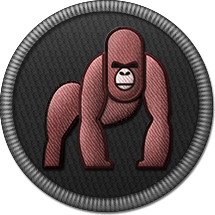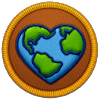
Islas Canarias / Canary Islands
Por favor, incluye todas las especies vegetales o animales que encuentres o hayas encontrado en las islas Canarias a esta misión para crear un mapa de su increíble biodiversidad. Gracias.
____
Please, conside adding all vegetable or animal species you find or have found in the Canary Islands to this mission so that we can create a map of its amazing biodiversity. Thank you.
Sign in to join mission

 Created by
Created by
Isabela
1 participant
34 spottings
El archipiélago canario tiene una importante diversidad biológica, con un gran número de especies endémicas.
Las islas canarias forman parte de la Macaronesia (nombre colectivo de cinco archipiélagos del Atlántico Norte, más o menos cercanos al continente africano: Azores, Canarias, Cabo Verde, Madeira e Islas Salvajes).
Su situación geográfica en el océano Atlántico, relieve volcánico y especiales condiciones de aislamiento biológico, han favorecido el desarrollo de procesos evolutivos que han originado nuevas especies animales y vegetales. Aproximadamente un 30% de las plantas y animales terrestres que habitan Canarias son endémicos, es decir que no se encuentran en ningún otro lugar, ya sea porque se originaron en estas islas o porque permanecieron en ellas tras desaparecer de sus lugares de origen.
Se estima que el número de especies que habitan las islas es de unas 19.500. De ellas, más de 14.300 son terrestres y más de 5.200 son marinas. Sin embargo, el inventario de la biodiversidad canaria sigue abierto, ya que cada año se descubren nuevas especies y se realizan cambios taxonómicos que, a menudo, hacen aumentar el número de endemismos de determinados grupos animales y vegetales.
----------
The Canaries archipelago is one of the biologically richest temperate zones in the world. The rate of endemism is very high for plants (21 %), reptiles (100 %) and invertebrates (39 %). The Canary Island’s vegetation includes 1,992 vascular plants.
In addition, the Canary Islands are also home to five species and 31 sub-species of endemic birds, including the near threatened Bolle’s Laurel Pigeon (Columba bollii), the White-tailed Laurel Pigeon (Columba junoniae) and the Blue Chaffinch (Fringilla teydea). The La Gomera Giant Lizard (Gallotia gomerana) is another iconic endemic species of these islands.
The archipelago has five main major habitats: xerophytic shrub, termophilous forest, laurel forest – a conservation priority and only found in the Macaronesia region –, pine forest, and high mountain shrub.
The marine biodiversity of the Canary Islands is just as exceptional. Deep water coral reefs composed mainly of Lophelia pertusa surround these islands to depths of 50 metres. The Canary Islands are a major hotspot for marine mammals – 29 of the 81 species of whales that exist in the world are found in the waters of the archipelago. Source: IUCN








